#ecological impact
Text
So I've been out of college for three years now, and it's been that long since I've done research or done academic style writing. Gonna start doing that again because it makes me happy. Current topic I'm doing is the TVA and the impact it's had on both modern and ancient living sites, possibly extending into ecological impacts. Focus is probably gonna be on Tellico Dam because it's right here and I know the area well and can physically go there easily (and, more excitingly, in my kayak). Might make a video essay about it. Is this something anyone would be interested in? If so, what other topics regarding things like biology and anthropology would you like to see?
#not vc sorry#research#academic#academic papers#writing#video essay#tva#tennessee valley authority#tellico dam#anthropology#archaeology#history#poll#polls#special interest#biology#ecology#ecological impact#dam#dams#flooding
2 notes
·
View notes
Text
Sowing Seeds of Change: Richard St. Barbe Baker's Green Legacy
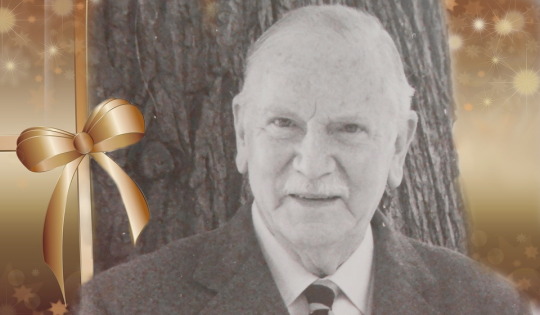
View On WordPress
#African Canopy#Arborial Ballet#Biodiversity Conservation#Canada#Canopy of Change#Community Empowerment#Community Science#Conservation Efforts#Conservation Legacy#Conservation Symphony#Conservation Wisdom#Cultural Connection#Cultural Unity#Dance of the Trees#desertification#Drought Resilience#Earth Conservation#earth&039;s wonders#Earthly Roots#Eco-friendly Practices#Ecological Impact#Ecological Resilience#Environmental Activism#Environmental Alchemist#Environmental Alchemy#environmental awareness#Environmental Awareness Campaigns#Environmental Ballet#Environmental Canopy#Environmental Change
0 notes
Text
Resurrecting the Brachiosaurus: Exploring Ecological Impact, Scientific Value, and Educational Potential
If you could bring back one dinosaur, which one would it be?
Unveiling the Dinosaur’s Resurrection: Which Prehistoric Giant Shall We Bring Back?
The idea of resurrecting dinosaurs, creatures that walked the Earth millions of years ago, has captured the imagination of both scientists and the general public. While it remains a feat of science fiction, it’s intriguing to ponder which dinosaur…

View On WordPress
#Brachiosaurus#dailyprompt#dailyprompt-2012#dinosaur resurrection#ecological impact#educational tool#scientific study#technological advancements
0 notes
Text
Louis and Claudia are not just identifiable as American by way of their speech (“American? Your French is ugly.”) and movement (“You could tell from his walk, he was an American.”), but are posited by the narrative to be symbolic representations of postwar America itself (“The American vampires appeared to be as dull and plain as their tourists and soldiers were.”, “Do American vampiresses all wear pastels?”, “And are all American vampires as alluring as you?”). The pair set themselves up in France as “moneyed Americans”, described by Armand as having a “velvet-heeled arrival” despite the pair coming to the city on the back of a truck. That Paris has been left by the war with deep physical and societal wounds is treated as an inconvenience that they have to impatiently endure. Santiago picks at these stitches during the performative execution of the pointedly foreign Annika, invoking the paranoia of occupation with his line “[...] the next time you're in the pew, you turn to your neighbour and say, ‘Peace be unto you.’ They'll give you up... in a wink!”. It is telling that the only explanation Armand gives for his choice of victims to the coven is that they are profiteering from the suffering of postwar France (“Whilst their countrymen clutch ration cards, they've made quite a killing manipulating the black markets.”), a statement which seems to deepen their appetite for the ensuing slaughter. These are not resentments and histories however shared by Claudia, who may revel in the massacre but has already knowingly associated with a woman branded as a collaborator, or Louis, whose attempts to engage with the world through photography only further positions him as an outsider. This detachment is what causes Louis and Claudia to be regarded as interlopers, suspected to believe themselves to be too important to heed traditions, manners (“It's custom and practice for traveling vampires to make themselves known”) or the welfare of their temporary home (“We were constantly cleaning up for them.”). Though American soldiers played a role in the later stages of the liberation of Paris, the increasing presence of Americans in the city is framed as another more insidious occupation (“[...] our Anglican friends now invading Paris postwar”, “My dear American friend [...] who has dominated my mind”). As Americans, Louis and Claudia are granted more privileges in society than other black ethnics groups (“But I wasn't an Algerian. I was an American”). It is not just that the French theatre troupe composed of multinational actors now has “five out of every seven” of their performances in English, but the coven has been instructed by Armand to remake itself as “an English company” and speak the language offstage too. Armand’s welcoming attitude to increasing American influence in the city, how it creates a “more receptive” and “optimistic” audience, is not a simple or universal one. There is a distinct bitterness belying the fanfare accompanying Louis and Claudia’s arrival, particularly from Santiago (“I ask you, Maitre, was it worth the wait?”), but it is also notably still present in Armand’s lighthearted teasing (“Seventy-seven years and it still feels like a slight.”, “Five months removed [...] the Americans were finally coming to Pigalle.”). At least during these early months, Louis and Claudia seem to view Paris more as a static backdrop against which they can discover themselves and heal their relationship. This is a mistake that they will likely only realise when it is already too late, for this fragile and volatile setting is entwined with the tragedy that awaits them.
#working title v1: an American vampire in Paris#(two references for the price of one!)#working title v2: take a drink everytime someone says 'American' in this episode#this really is a continuation of @saintarmand's points about parallels between countries and characters#the line about Louis and Claudia's irresponsible disposing of bodies made me think about discussions of the ecological impact of tourism#Louis' line about how they frequently move cities I'm sure will come up again#it would be really interesting if one of the tensions the coven have with Madeleine is their perception of her as a traitor#Louis de Pointe du Lac#Claudia#Armand#Santiago#Interview with the Vampire#Jagged Jottings
241 notes
·
View notes
Text
the difference between a boy and a man is that a boy will praise jiub's eradication of the cliff racer pest from vvardenfell but a man will detest his extirpation of a native species and the subsequent damage to the vvardenfell ecosystem
428 notes
·
View notes
Text

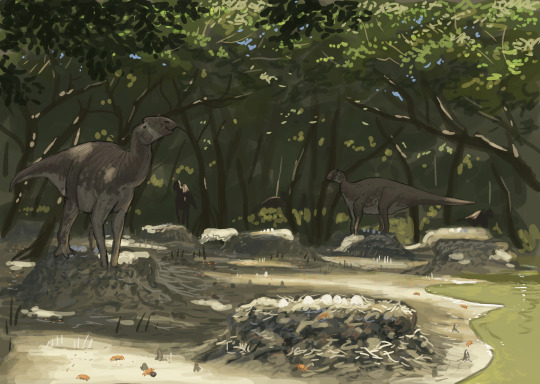


Todays stream was about the ecological impact of animals. Starting with Opisthocoelicaudia plowing channels through a wetland, Secernosaurus nesting colony on a mangrove forest, Titanites mass spawning and a beached Aristonectes being food for a lot of animals.
#paleoart#sciart#ecology#eco-impact#dinosaur#aristonectes#ammonite#secernosaurus#nemegt#paleostream#palaeoblr#cretaceous#hadrosaur
893 notes
·
View notes
Text
Source: Tripybara on Threads
Israel's genocidal violence isn't just killing Palestinians.
It is killing the entire ecosystem of the Levant
Israel must be stopped.
Nothing. Literally nothing justifies this.
(Also this is further proof that Israel is nothing but a european settler colony. Because no Indigenous people would ever do this to their land. Ever.)
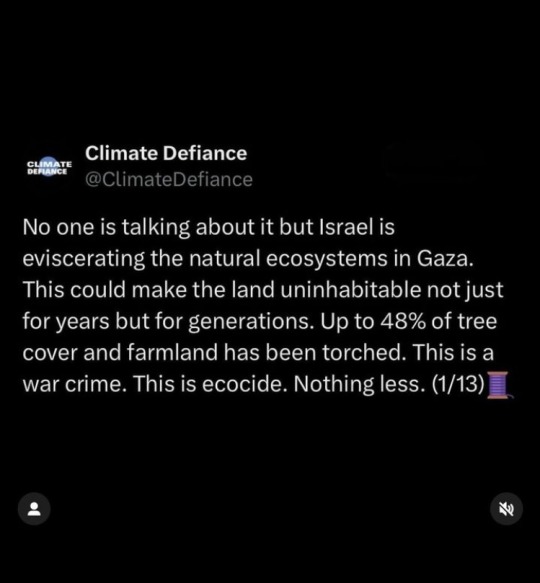

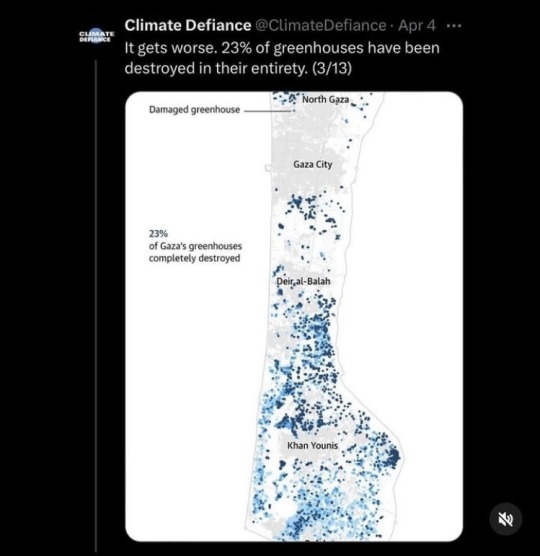
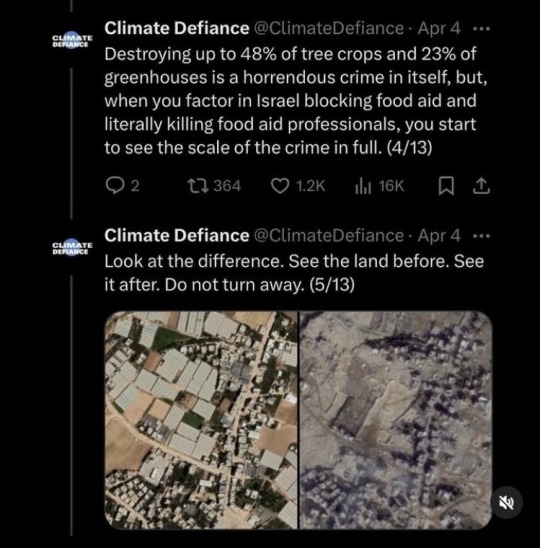
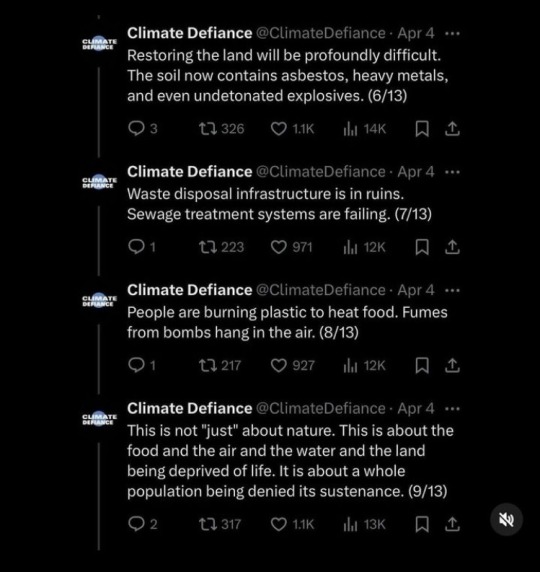
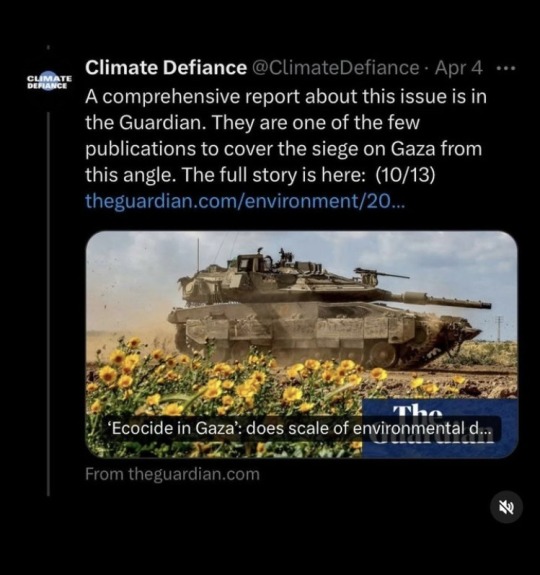
#threads#threads app#social justice#current events#human rights#yemen#tel aviv#jerusalem#free palestine#gaza#free gaza#palestine#gaza strip#gaza genocide#save gaza#gazaunderattack#freepalastine🇵🇸#free palastine#from the river to the sea palestine will be free#palestine 🇵🇸#ecology#environmentalism#environmental science#environmental awareness#environmental issues#environmental impact#news on gaza#palestine news#stand with gaza#gazaunderfire
80 notes
·
View notes
Text
Something I like about Scarlet and Violet is how the writers subverted fan expectations with who the villain is.
"Clavell is the true villain" -> Just a nice old man who genuinely wants to understand the students and better the school and feels bad about the whole situation when he learns the history behind Team Star. It's ultimately his experiences raiding the Team Star bases with MC and Cassiopeia that lets him give them all a second chance.
"Sada/Turo is the true villain" -> Correct, but the professor we meet is actually an AI, and the real professor died years ago. The AI eventually comes to the conclusion that the time machine must be stopped and enlists the MC and friends to help them stop it, ultimately sacrificing themself to save Paldea.
"Briar is the true villain" -> A little too obsessed with the Terastal phenomenon and greatly underestimated Teragapos's true power, but ultimately not malicious.
Briar's especially interesting because I think she could've gone down the same path as the professor if she was doing her thing 10-20 years earlier and had access to the same resources as them. Their obsession both went too far, but by being in the right place at the right time, Briar's obsession couldn't manifest into something far more dangerous.
#i don't know if briar would stop the time machine by herself if she figured out the ecological impact#while the professor seemed to know but was too obsessed with their research/goal to care#it's an interesting parallel#pokemon#pokemon scarlet and violet#the indigo disk#pokemon sv#pokemon sv dlc#pokemon scarlet violet#pokemon scarvio#pokemon scarlet violet dlc#pokemon scarvio dlc#the indigo disk spoilers#pokemon the indigo disk#indigo disk spoilers#pokemon dlc spoilers#pokemon sv spoilers#pokemon briar
87 notes
·
View notes
Text

#not so recent—from 2022#but still good news that i just learned about that will have big impacts!#good news#science#environmentalism#nature#environment#animals#conservation#dogs#hero dogs#penguins#invasive species#ecology#animal protection#animal death /#Macquarie Island#birds
41 notes
·
View notes
Text
ART TIME
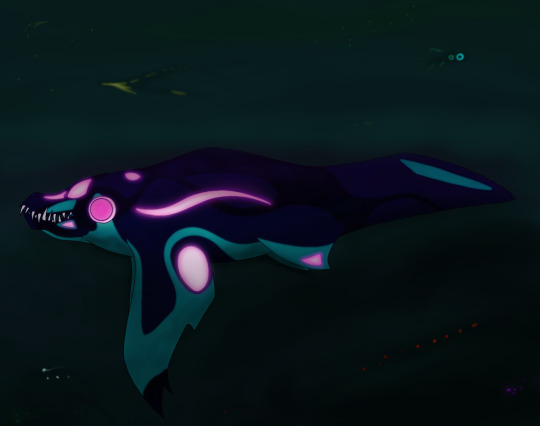
I've been working on this, a Wave Skimmer, for a few days now! I don't have much lore for it other than it being a relative of the Brute Shark, with the toughened jaws_ a chaotic teeth set up_ and two long main fins. As well as features the Brute Shark doesn't have, like the two immobile fins that connect with the tail and aid in giving it a more ichthyosaur look_ bioluminescence spots_ and two large pink eyes
While the Wave Skimmer is faster and has far better vision than it's Brute Shark cousin, it is approximately a third of the size and often falls prey tothe larger carnivores in the Void.
#if tumblr kills the quality then oh well#oh well#I'm not sure about how this one turned out#there's a red version and a blue version because I Wasn't Sure™️ which one looked better#Subnautica#original creation#art tag#okay this was originally supposed to be vaguely related to the chelicerate instead but i said fuck that to all the scutes#the background was very last minute but i think seeing the distant glows of other wildlife is a cool touch#the fact that most life on planet 4546B has bioluminescence has gotta have impacts on the ecology#art#it's just a little guy#i hope this is coherent
36 notes
·
View notes
Text
UNEA-6: Nurturing Harmony Between Humanity and Nature
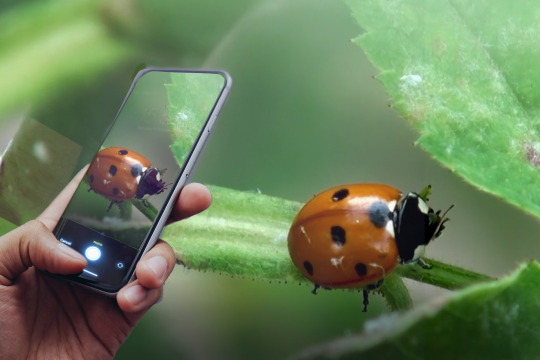
View On WordPress
#biodiversity loss#bold environmental plan#charity tax deductions#Climate Action#climate change#collective environmental action#collective vision#community support#Dana Meadows legacy#Dana Meadows principles#Dana Meadows style#decision-making body#Donella Hager#Earth day#Earth Day initiatives#Earth Day Inspiration#ecological consciousness#ecological harmony#Ecological Impact#Environmental Activism#environmental advocacy#environmental assembly#environmental awareness#environmental campaigner#Environmental Champions#Environmental Collaboration#Environmental Education#environmental ethics#Environmental Influencers#environmental leaders
0 notes
Text
On May 28, 1914, the Institut für Schiffs-und Tropenkrankheiten (Institute for Maritime and Tropical Diseases, ISTK) in Hamburg began operations in a complex of new brick buildings on the bank of the Elb. The buildings were designed by Fritz Schumacher, who had become the Head of Hamburg’s building department (Leiter des Hochbauamtes) in 1909 after a “flood of architectural projects” accumulated following the industrialization of the harbor in the 1880s and the “new housing and working conditions” that followed. The ISTK was one of these projects, connected to the port by its [...] mission: to research and heal tropical illnesses; [...] to support the Hamburg Port [...]; and to support endeavors of the German Empire overseas.
First established in 1900 by Bernhard Nocht, chief of the Port Medical Service, the ISTK originally operated out of an existing building, but by 1909, when the Hamburg Colonial Institute became its parent organization (and Schumacher was hired by the Hamburg Senate), the operations of the ISTK had outgrown [...]. [I]ts commission by the city was an opportunity for Schumacher to show how he could contribute to guiding the city’s economic and architectural growth in tandem, and for Nocht, an opportunity to establish an unprecedented spatial paradigm for the field of Tropical Medicine that anchored the new frontier of science in the German Empire. [...]
[There was a] shared drive to contribute to the [...] wealth of Hamburg within the context of its expanding global network [...]. [E]ach discipline [...] architecture and medicine were participating in a shared [...] discursive operation. [...]
---
The brick used on the ISTK façades was key to Schumacher’s larger Städtebau plan for Hamburg, which envisioned the city as a vehicle for a “harmonious” synthesis between aesthetics and economy. [...] For Schumacher, brick [was significantly preferable] [...]. Used by [...] Hamburg architects [over the past few decades], who acquired their penchant for neo-gothic brickwork at the Hanover school, brick had both a historical presence and aesthetic pedigree in Hamburg [...]. [T]his material had already been used in Die Speicherstadt, a warehouse district in Hamburg where unequal social conditions had only grown more exacerbated [...]. Die Speicherstadt was constructed in three phases [beginning] in 1883 [...]. By serving the port, the warehouses facilitated the expansion and security of Hamburg’s wealth. [...] Yet the collective profits accrued to the city by these buildings [...] did not increase economic prosperity and social equity for all. [...] [A] residential area for harbor workers was demolished to make way for the warehouses. After the contract for the port expansion was negotiated in 1881, over 20,000 people were pushed out of their homes and into adjacent areas of the city, which soon became overcrowded [...]. In turn, these [...] areas of the city [...] were the worst hit by the Hamburg cholera epidemic of 1892, the most devastating in Europe that year. The 1892 cholera epidemic [...] articulated the growing inability of the Hamburg Senate, comprising the city’s elite, to manage class relationships [...] [in such] a city that was explicitly run by and for the merchant class [...].
In Hamburg, the response to such an ugly disease of the masses was the enforcement of quarantine methods that pushed the working class into the suburbs, isolated immigrants on an island, and separated the sick according to racial identity.
In partnership with the German Empire, Hamburg established new hygiene institutions in the city, including the Port Medical Service (a progenitor of the ISTK). [...] [T]he discourse of [creating the school for tropical medicine] centered around city building and nation building, brick by brick, mark by mark.
---
Just as the exterior condition of the building was, for Schumacher, part of a much larger plan for the city, the program of the building and its interior were part of the German Empire and Tropical Medicine’s much larger interest in controlling the health and wealth of its nation and colonies. [...]
Yet the establishment of the ISTK marked a critical shift in medical thinking [...]. And while the ISTK was not the only institution in Europe to form around the conception and perceived threat of tropical diseases, it was the first to build a facility specifically to support their “exploration and combat” in lockstep, as Nocht described it.
The field of Tropical Medicine had been established in Germany by the very same journal Nocht published his overview of the ISTK. The Archiv für Schiffs- und Tropen-Hygiene unter besonderer Berücksichtigung der Pathologie und Therapie was first published in 1897, the same year that the German Empire claimed Kiaochow (northeast China) and about two years after it claimed Southwest Africa (Namibia), Cameroon, Togo, East Africa (Tanzania, Burundi, Rwanda), New Guinea (today the northern part of Papua New Guinea), and the Marshall Islands; two years later, it would also claim the Caroline Islands, Palau, Mariana Islands (today Micronesia), and Samoa (today Western Samoa).
---
The inaugural journal [...] marked a paradigm shift [...]. In his opening letter, the editor stated that the aim of Tropical Medicine is to “provide the white race with a home in the tropics.” [...]
As part of the institute’s agenda to support the expansion of the Empire through teaching and development [...], members of the ISTK contributed to the Deutsches Kolonial Lexikon, a three-volume series completed in 1914 (in the same year as the new ISTK buildings) and published in 1920. The three volumes contained maps of the colonies coded to show the areas that were considered “healthy” for Europeans, along with recommended building guidelines for hospitals in the tropics. [...] "Natives" were given separate facilities [...]. The hospital at the ISTK was similarly divided according to identity. An essentializing belief in “intrinsic factors” determined by skin color, constitutive to Tropical Medicine, materialized in the building’s circulation. Potential patients were assessed in the main building to determine their next destination in the hospital. A room labeled “Farbige” (colored) - visible in both Nocht and Schumacher’s publications - shows that the hospital segregated people of color from whites. [...]
---
Despite belonging to two different disciplines [medicine and architecture], both Nocht and Schumacher’s publications articulate an understanding of health [...] that is linked to concepts of identity separating white upper-class German Europeans from others. [In] Hamburg [...] recent growth of the shipping industry and overt engagement of the German Empire in colonialism brought even more distant global connections to its port. For Schumacher, Hamburg’s presence in a global network meant it needed to strengthen its local identity and economy [by purposefully seeking to showcase "traditional" northern German neo-gothic brickwork while elevating local brick industry] lest it grow too far from its roots. In the case of Tropical Medicine at the ISTK, the “tropics” seemed to act as a foil for the European identity - a constructed category through which the European identity could redescribe itself by exclusion [...].
What it meant to be sick or healthy was taken up by both medicine and architecture - [...] neither in a vacuum.
---
All text above by: Carrie Bly. "Mediums of Medicine: The Institute for Maritime and Tropical Diseases in Hamburg". Sick Architecture series published by e-flux Architecture. November 2020. [Bold emphasis and some paragraph breaks/contractions added by me. Text within brackets added by me for clarity. Presented here for commentary, teaching, criticism purposes.]
#abolition#ecology#sorry i know its long ive been looking at this in my drafts for a long long time trying to condense#but its such a rich comparison that i didnt wanna lessen the impact of blys work here#bly in 2022 did dissertation defense in architecture history and theory on political economy of steel in US in 20s and 30#add this to our conversations about brazilian eugenics in 1930s explicitly conflating hygiene modernist architecture and white supremacy#and british tropical medicine establishment in colonial india#and US sanitation and antimosquito campaigns in 1910s panama using jim crow laws and segregation and forcibly testing local women#see chakrabartis work on tropical medicine and empire in south asia and fahim amirs cloudy swords#and greg mitmans work on connections between#US tropical medicine schools and fruit plantations in central america and US military occupation of philippines and rubber in west africa#multispecies#imperial#indigenous#colonial#landscape#temporal#see also us mosquito campaigns in panama and british urban planning in west africa and rohan deb roy work on india bengal entomology#ecologies#bugs#tidalectics#archipelagic thinking#plantations
13 notes
·
View notes
Text
climate change blackpill megapost
there are several climate tipping points identified in the united nations intergovernmental panel on climate change sixth assessment report (chapter 3, specifically). tipping points refer to critical thresholds in a system that, when exceeded, can lead to a significant change in the state of the system, often with an understanding that the change is irreversible. they are:
the greenland ice sheet
the west antarctic ice sheet
the atlantic meridional overturning current
monsoon systems
el niño-southern oscillation
tropical rainforests
northern boreal forests
thawing permafrost
extreme heat
current (2022) global warming of ~1.1°C above preindustrial temperatures already lies within the lower end of some tipping point uncertainty ranges. several tipping points may be triggered in the paris agreement range of 1.5 to <2°C global warming, with many more likely at the 2 to 3°C of warming expected on current policy trajectories.
greenland's ice sheet is in disequilibrium and we are committed to 2-3 meters of sea level rise from its melt alone in the next 200 years.
greenland's ice sheets have been melting twice as fast in the last twenty years as they were during the previous century.
rapid increase in the rate of melting of the west antarctic ice sheet is unavoidable.
the west antarctic ice sheet is retreating twice as fast as previously predicted
because of widespread seawater intrusion beneath the grounded ice of the thwaites glacier.
the west antarctic ice sheet will raise sea levels by four meters when it melts.
this is causing the atlantic meridional overturning current to collapse.
the gulf stream (aka amoc) is weakening. 99% confidence. measured volume through the florida straits has declined by 4% in the past 40 years
the gulf stream will collapse between 2025 and 2095. 95% confidence.
the north atlantic is four standard deviations above its historic temperatures.
when the amoc collapses, the arctic sea-ice pack will extend down to 50°n. the vast expansion of the northern hemispheric sea-ice pack amplifies further northern hemispheric cooling via the ice-albedo feedback.
a collapse of the atlantic meridional overturning circulation would have substantial impacts on global precipitation patterns, especially in the vulnerable tropical monsoon regions in west africa, east asia, and india where they will experience shorter wet seasons and longer dry seasons with an overall decrease in precipitation
although recent studies indicate that the amazon will experience net benefit from the collapse of the amoc with cooler temperatures and increased rainfall
increased el niño intensity will increase the frequency and severity of droughts in the amazon rainforest.
even if we were able to stabilize global mean temperature at 1.5º C, el niño intensity will continue to increase for a century
and the amazon rainforest is currently in the worst drought on record, which may indicate it has passed its threshold to maintain its own wet climate.
while widespread and persistent warming of permafrost has been observed in polar regions and at high elevations since about 1980, the highest permafrost temperatures in the instrumental record were recorded in 2018–2019 (data from 2019-2020)
as of 2019 the southern extent of permafrost had receded northwards by 30 to 80km
soil fires in the canadian arctic are burning the peat underground and melting the permafrost. stat from the study 70% of recorded area of arctic peat affected by burning over the past forty years has occurred in the last eight and 30% of it was in 2020 alone.
nasa finds that tundra releases plumes of methane in the wake of wildfires.
in 2023 eight times more land burned in canada than average.
russian siberia experienced a similarly massive fire season in 2021.
a methane source we weren’t expecting was warmer, wetter conditions to increase organic decomposition in tropical wetlands which is releasing ever increasing amounts of methane.
we have been experiencing exponential rise in atmospheric methane since 2006. historical data indicates that we may have entered into an ice age termination event fueled by these methane releases.
we have been over 1.5º C above pre-industrial temperatures since the beginning of 2023.
this may be because of the extreme el niño conditions of the 2023-24 cycle, but breaches of 1.5°C for a month or a year are early signs of getting perilously close to exceeding the long-term limit
and the world meteorological organization expects us to permanently break 1.5º C of warming from pre-industrial levels within the next five years.
the united nations environmental programme (unep) emissions gap report found that current fossil fuel extraction commitments leave no credible path to keeping warming below 1.5º C. based on current policies we will experience 2.8ºC of warming by 2100. even if all current pledges were implemented and followed through with (which they never have been), we will only be able to limit that to 2.4-2.6ºC of warming.
#this isn't even touching on the anthropological or ecological impacts#just the physics of the predicament#climate change#climate crisis#climate emergency#ipcc#extinction rebellion#last generation#just stop oil#it's the end of the world as we know it
10 notes
·
View notes
Text
Daily fish fact #331
Lined butterflyfish!

At 30 cm (12 inches) in length, they are one of the largest butterflyfishes out there! They feed on coral and anemones, which can lead to problems in reefs if lined butterflyfish and other corallivores become too common; however, loss of coral cover makes it easier for predators to hunt these fish, bringing balance to the ecosystem.
#i want to bring up that last point for ecological reasons; human impact is still the biggest threat to reefs!#not this 1 (one) species and other corallivores#fish#fishfact#fish facts#fishblr#biology#zoology#marine life#marine animals#marine biology#sea animals#sea life#sea creatures#butterflyfish#lined butterflyfish
111 notes
·
View notes
Text
So. I'm taking a gardening cert class through an extension university. Really well written, great flow and presentation of content knowledge, concepts, as well as resources for where to read or how to find other knowledge sources. Great. Lovely.
Anyway it's supposed to run from Dec to March but I procrastinated badly and. I am doing it all in two weeks.
From an educator's perspective, the way I am completing this is Bad and Not Pedagogically Sound. I also just took the entomology quiz without reading any of the materials and got a 100% so :/
#harper talks#I just need this certificate I will Do It Evil if the other option is don't do it at all#yes I know ento is a flex I am reading the other sections of course but also I have:#worked in a greenhouse for 3 years#was raised by someone actively doing invasive and native plant species management#have run gardens both professionally and personally for years#taken tons of ecology and enviro courses#have many botanist and ecologist freak (affectionate) friends#have done academic research related to pesticide uses and impacts#stare at iNat everyday#this is an ongoing issue for me oops#I'm great at putting things off and then sticking the finish it's not good#I wrote my PhD prelims in... 36 hours? maybe?#and got so much praise on the quality of my written and oral responses#this will be Fine#not Good! but Fine!#obnoxious capitalization sorry
4 notes
·
View notes
Text

youtube
#tiktok#exotic animals#exotic pets#problematic#animal cruelty#animal rights#animal abuse#animal video#wild animals#animal#animals#animal posting#animalblr#video essay#environmentalism#environmental science#environmental impact#ecology#environmental#tiktok is a plague#tiktok is hell#tiktok is a disease#tiktok is toxic#tumblr recommendations#recommend#recommendation#youtube#youtube content#youtube recommendations#youtube video
35 notes
·
View notes